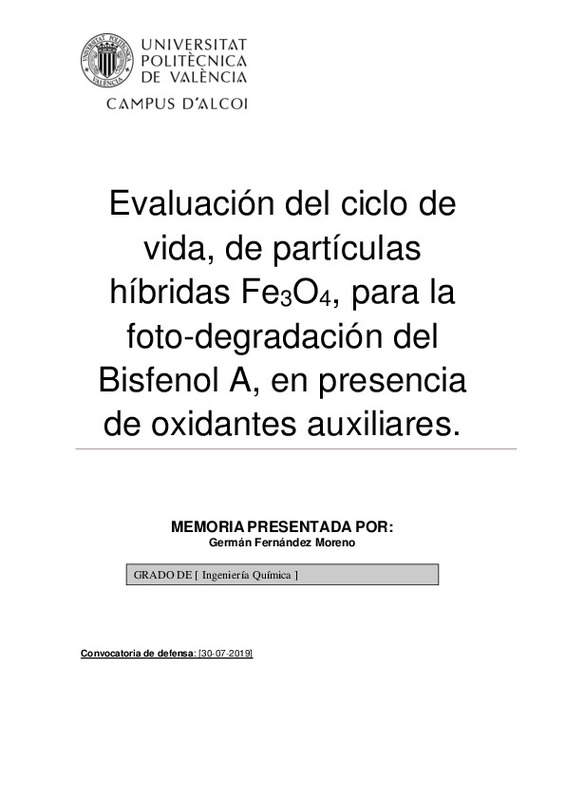JavaScript is disabled for your browser. Some features of this site may not work without it.
Buscar en RiuNet
Listar
Mi cuenta
Estadísticas
Ayuda RiuNet
Admin. UPV
Análisis de Ciclo de Vida aplicado a partículas híbridas (Fe3O4 / 0,5% HA) para la fotodegradación del bisfenol A en presencia de oxidantes auxiliares
Mostrar el registro completo del ítem
Fernández Moreno, G. (2020). Análisis de Ciclo de Vida aplicado a partículas híbridas (Fe3O4 / 0,5% HA) para la fotodegradación del bisfenol A en presencia de oxidantes auxiliares. http://hdl.handle.net/10251/148053
Por favor, use este identificador para citar o enlazar este ítem: http://hdl.handle.net/10251/148053
Ficheros en el ítem
Metadatos del ítem
| Título: | Análisis de Ciclo de Vida aplicado a partículas híbridas (Fe3O4 / 0,5% HA) para la fotodegradación del bisfenol A en presencia de oxidantes auxiliares | |||
| Autor: | Fernández Moreno, Germán | |||
| Director(es): | Bianco Prevot, Alessandra | |||
| Entidad UPV: |
|
|||
| Fecha acto/lectura: |
|
|||
| Resumen: |
[ES] El objetivo principal de este proyecto es el Análisis del Ciclo de Vida (ACV) del Bisfenol A (BPA),el cual es el principal causante de trastornos endocrinos y de numerosos impactos categóricos ambientales; habiendo ...[+]
[EN] This project aims to analyze Bisphenol A (BPA) ¿s Life Cycle Assessment (LCA), being this responsible of endocrine disorders and numerous environmental categorical impacts, throughout the development of two degradation ...[+]
|
|||
| Palabras clave: |
|
|||
| Derechos de uso: | Reserva de todos los derechos | |||
| Editorial: |
|
|||
| Titulación: |
|
|||
| Tipo: |
|
recommendations
Este ítem aparece en la(s) siguiente(s) colección(ones)
-
EPSA - Trabajos académicos [5826]
Escuela Politécnica Superior de Alcoy







